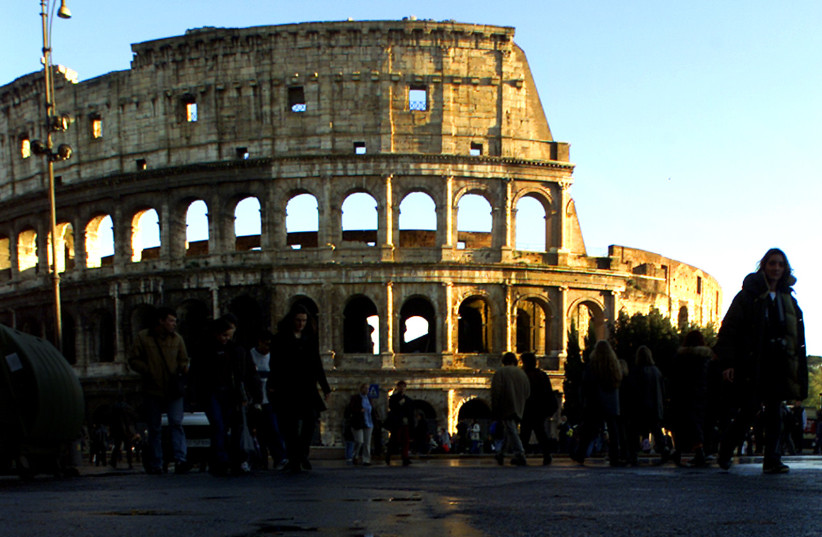Archaeologists uncovered a well-preserved Roman winery in the south of Rome during excavations from 1998-2018, according to a new study. The winery was found at the Villa of the Quintilii, on the fifth mile of the Via Appia Antica.
Researchers studied the architecture of the winery and found that the location was uniquely decorated. The level of luxury was unusual for ancient production spaces, as only the Villa Magna has been known to have such elite décor, they explained in their peer-reviewed study, published in the Cambridge University Press.
Evidence of the winery was initially discovered while archaeologists were excavating two parallel walls and towers. While researchers were searching the east tower, they uncovered a forgotten winery that had been partially constructed over the demolished tower.
The winery includes the typical features of "a grape treading area, two presses, a vat for the collection and settling of grape must, and a system of channels connecting these features to a cella vinaria (wine cellar) with dolia defossa (sunken storage jars),” the authors wrote.
While the features are typical, the level of décor was atypical.

The winery’s “decoration and arrangement are almost unparalleled for a production context in the Roman, and perhaps entire ancient, world.”
The winery was surrounded by large seating rooms, which provided a view over the whole production process. These rooms were decorated with inlaid veneer, motifs of carystium and marble. A decorative band of alternating triangles in carystium and portasanta marble, and separation strips in lacedaemonium (serpentino) marble, slate and porphyry encircled the rooms.
Dolia (transportation units) from 1 AD had been repaired and reused in the villa, which led the researchers to question what the function of this had been. Dolia were expensive to replace, which might have been a reason to maintain the 200-year-old dolia, but the researchers have a different hypothesis. They believe that the imperial state might have sought to retain property and goods, such as dolia, within its circle.
The Villa of Quintilii
Archaeological investigation at the Villa of the Quintilii has been traced back to the fifteenth century, with records of finds in 1485. The Villa is included on Volpaia's Il Paese di Roma map (1547), and denoted by various local toponyms: first, ‘Statuario’ and, later, ‘Roma Vecchia.’
The first monumental construction is dated by brick stamps to 125 AD, which aligns with the belief that the villa was owned by the Quintilii brothers. The Quintilii brothers served as consuls of Rome in 151 AD.
The Torlonia family purchased the Villa in 1797 and excavations began shortly after.
The romanticized image of wine
Working in a vineyard with the earth was heavily romanticized by the Roman elite who cultivated a romanticized image of the rural farm worker and celebrated the landowner as commander of nature, the authors write.
Wine production has been found depicted as early as the third millennium BCE, but the Egyptians depicted wine production in tomb paintings and the origin of wine was heavily embedded in Persian mythology.
According to experts, the former estate was more than just a representation of rusticity and overinvestment. Instead, it was the site of a vintage ritual that was tied to the ceremonial opening of the harvest in Latium.
The winery at the villa offered a similar space for performance, with a stage-like calcatorium and a cella vinaria, surrounded by dining rooms for onlookers. The extravagant marble decoration marked spaces fit for the emperor, turning the winery into a sacred theater for this sacred performance.
Experts are exploring the potential relocation of a significant ritual during the reign of Gordian, based on a rearrangement of imperial properties
While there is no direct literary evidence about the villa during this time, it is believed that the location on the Via Appia made it more visible, convenient and accessible for a mobile emperor with a large armed retinue.
However, there is also the possibility that the extravagant setting was simply designed to showcase agricultural production and cultivate an elite identity for aristocratic audiences. Without direct evidence, the true nature of the villa's theatrical setting remains uncertain.
The mechanical presses have been found at the site, which is a notable contrast to the absence of presses at the nearby Villa Magna.
Experts suggest that this discrepancy may be explained by the fact that treading, rather than pressing, produces a higher-quality wine and thus treading was prioritized in this unique imperial ritual context.
While it is possible that presses may yet be found in another room or building during further investigations, it is unlikely that the messy and large quantities of pomace were transported far between the treading floor and the press.
Archaeological evidence shows that treading floors and presses are typically located close together within a complex.
The Villa of Quintilii's innovative design provides a unique perspective on ancient Roman architecture and offers visitors a glimpse into the grandeur of the past.
The winery is an example of how storage facilities could be both utilitarian and elegant in style, fusing Varro's juxtaposition of membra rustica and urbana ornamenta.
It raises hypothetical links to vintage rituals similar to that celebrated at Villa Magna. The Villa of the Quintilii winery is only the second known example of wine production at an imperial facility, shedding light on the relationship of the imperial domus to the agricultural world.
The villa winery may also offer a glimpse into the emperor's annual routine. It speaks to the wider nexus of social power and agricultural wealth in the ancient world, raising broader questions about global antiquity, particularly in other imperial cultures.
